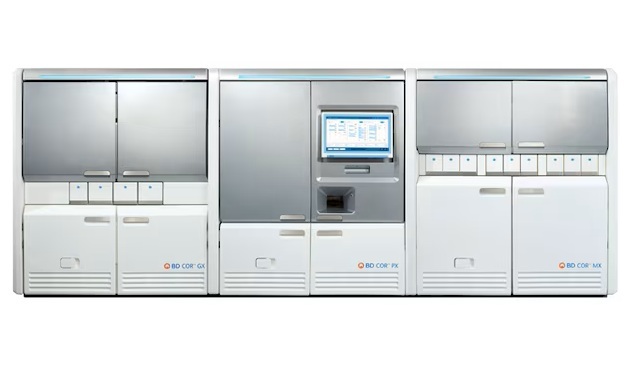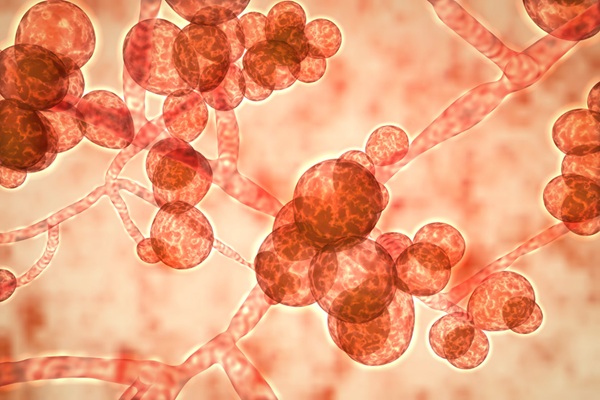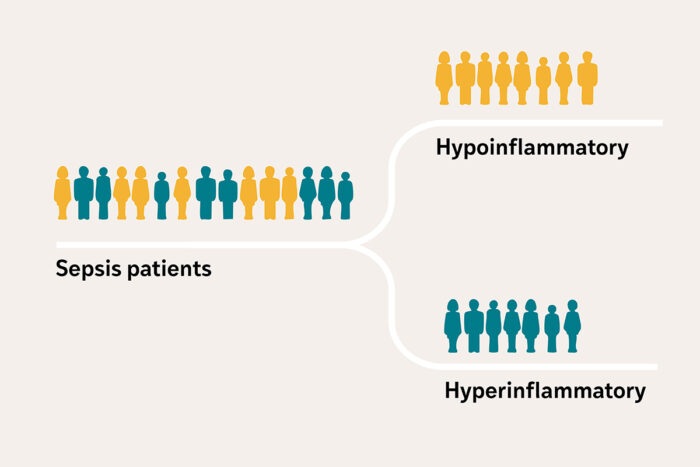Deoxyribozyme Strategy Applied to Infectious Pathogen Detection
By LabMedica International staff writers
Posted on 14 Mar 2013
A novel strategy has integrated two emerging technologies for point-of-care (POC) analysis of infectious disease targets.Posted on 14 Mar 2013
The combination of colorimetric coupling of surface plasmons of gold nanoparticles with deoxyribozymes (DNAzyme) signal amplification technology creates a fast and simple detection method for genetic targets with a simple colorimetric readout.
Scientists at the University of Toronto (ON, Canada) have generated a rapid-diagnostic biosensor that will allow technicians to test for multiple diseases at one time with one small sample, and with high accuracy and sensitivity. The biosensor relies upon gold particles in much the same vein as the average pregnancy test. With a pregnancy test, gold particles turn the test window red because the particles are linked with an antigen that detects a certain hormone in the urine of a pregnant woman.
The scientists can target a particular disease by linking gold particles with DNA strands. When a sample containing the disease gene, such as malaria, is present, it clumps the gold nanoparticles (GNP), turning the sample blue. Rather than clumping the particles together, the team immerses the gold particles in a DNA-based enzyme solution (DNAzyme) that, when the disease gene is introduced, snips the DNA from the gold particles, turning the sample red. The linker strand includes a substrate sequence that can be cleaved by a multicomponent nucleic acid enzyme (MNAzyme), which is one of the reported DNA responsive DNAzymes.
The advantage of this method is that far less of the gene needs to be present for the solution to show noticeable color changes, amplifying detection. A single DNAzyme can snip up to 600 “links” between the target genes. Just a single drop from a biological sample such as saliva or blood can potentially be tested in parallel, so that multiple diseases can be tested in one sitting. The team has also demonstrated that they can transform the testing solution into a powder, making it light and far easier to ship than solutions, which degrade over time. Powder can be stored for years at a time, and offers hope that the technology can be developed into efficient, cheap, over-the-counter tests for diseases such as Human immunodeficiency virus (HIV) and malaria for developing countries, where access to portable diagnostics is a necessity
Warren Chan, PhD, the senior author of the study, who holds a Canada Research Chair in Nanobiotechnology, said, "There's been a lot of emphasis in developing simple diagnostics. The question is how do you make it simple enough, portable enough? Gold is the best medium, because it's easy to see. It emits a very intense color." The authors concluded the MNAzyme-GNP assay provides a simple and fast colorimetric method for detection of genetic targets of bacterial, viral, and parasitic origins with 50 pM sensitivity without the need for purification and separation steps. The study was published online on February 10, 2013, in the journal Angewandte Chemie International Edition.
Related Links:
University of Toronto








 (3) (1).png)





